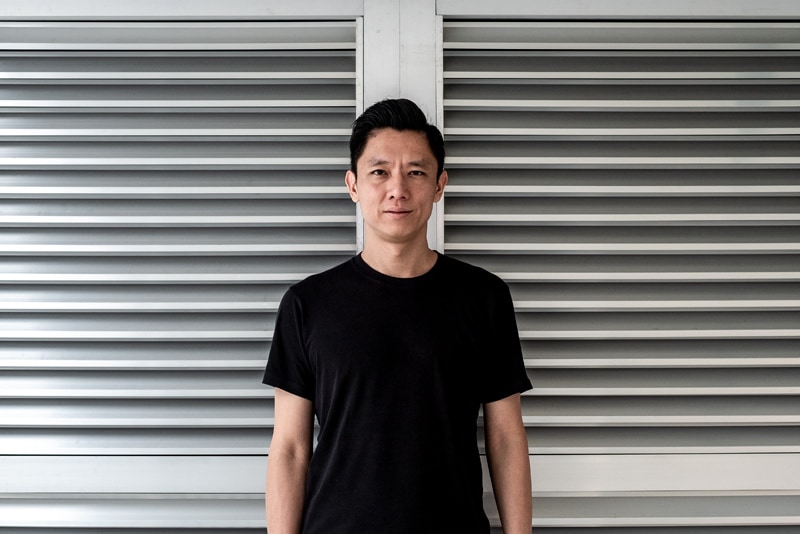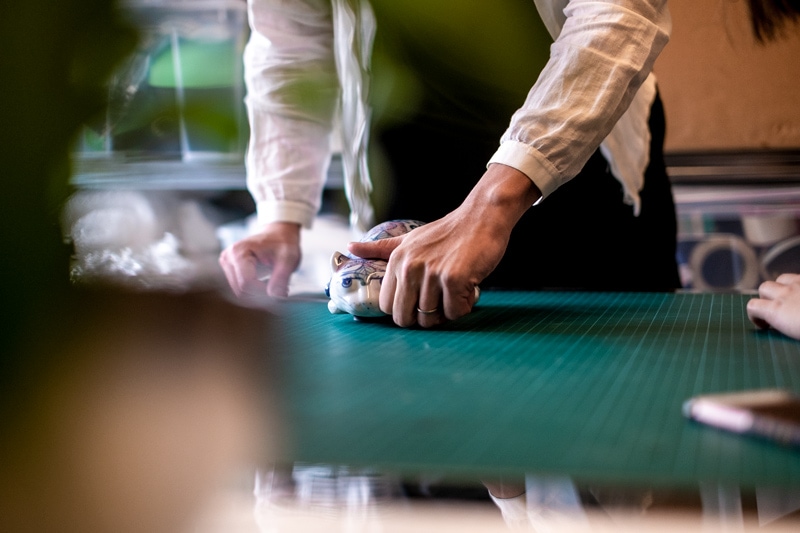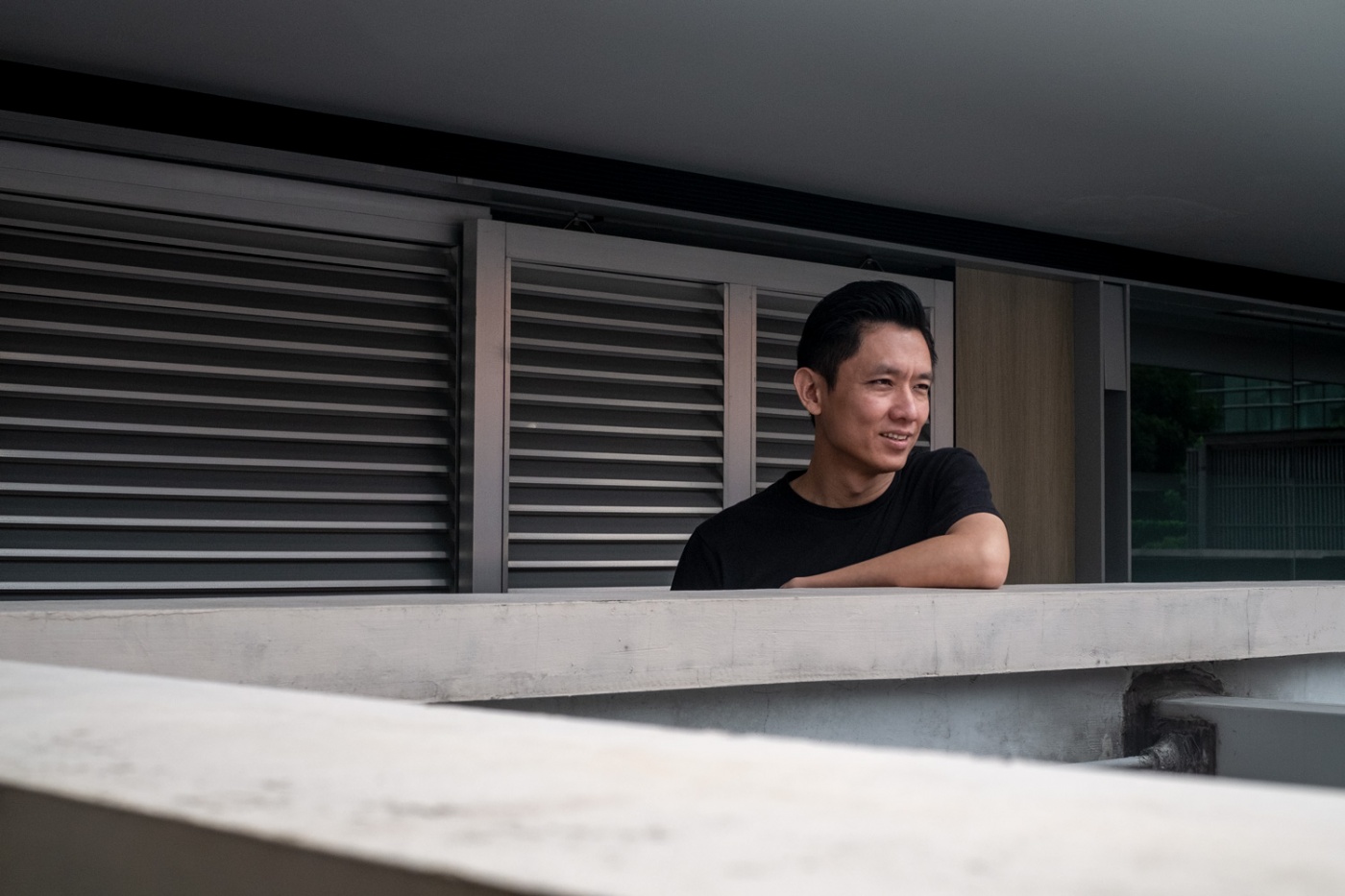Hans Tan: Blurring the Lines Between Art and Design
What Makes Art, Art is a series that delves into some of art’s biggest questions and picks the minds of various individuals from the art industry to uncover diverse perspectives that stimulate, inspire, confront and even clash.
“I always avoid calling myself an artist,” says Hans Tan, who was named Designer of the Year at the 2018 President’s Design Awards. Yet, the 40-year-old’s oeuvre intentionally focuses on blurring the boundaries that separate art from design. Heavily influenced by the more fluid creative culture in the Netherlands, which Hans discovered while studying at the Design Academy Eindhoven, he returned to Singapore with a new lens and opened an eponymous studio.
Since then, he’s created a gamut of award-winning designs—from the Pour side table (inspired by the process of making kueh lapis) to the Spotted Nyonya collection, both of which bagged Design of the Year in 2015 and 2012. While functional, there’s no denying his works boast an artistic flair that set them apart from any regular decor piece.
Despite having gained international recognition and had his designs held at New York’s Cooper Hewitt Smithsonian Design Museum, the occasional assistant professor at NUS keeps to his humble, compact space at the National Design Centre. In person, he exhibits no airs, his personality reflecting his proclivity for seeing beauty in everyday objects and unwanted items.
One of his favourite furniture designs is the kopitiam chair, a cheap, ubiquitous, label-less object that most would look past. Similarly, he recognises the ingenuity of design in things like tweezers and tongs, the kind you’d find in a provision shop. “They use as little material as possible to fulfil their required function and are not often thought of as design items, but they’re actually really well-made,” he says.
In a country where the DesignSingapore Council is under the Economic Development Board, Hans stands out as a non-conformist, when everyone is trying to put him in a box as a designer. “I do many home projects and don’t take on client work. But I do make some exceptions if the commissions are aligned to my work. In a way, my studio functions more like an artist’s studio,” Hans shares. The perennial debate between art and design may never truly be resolved, but what cannot be argued is that this designer-artist has done much to close the gap between the two by opening up unseen perspectives.

High Net Worth: How do you define the difference between art and design?
Hans Tan: I see them as different points on the same continuum. Maybe one focuses more on design-led outcomes, while the other is more art-led. I don’t try to delineate the difference between them. It’s just whether the outcome of the work is interesting or not.
What about art in general? How would you define art?
I don’t try to define art. I can kind of define design, but not art. Even artists or art practitioners can’t come up with a consistent definition of art. I’m no one to contribute! In good design, there’s always an element of good art. In good art, there’s also an element of good design. There’s always a utility in art. Even decorations have a function, which is to make something a little more beautiful, although some might say they’re non-utilitarian. Art is also supposed to communicate ideas or emotions. It’s communication design, to some extent. You’re creating an experience, a physical reaction from the viewer… that’s not that different from design.
What is good design to you?
Good design is a thoughtful piece of work that uses minimum resources to achieve innovative solutions to solve an intended outcome. It’s as straightforward as that.
What’s your creative process like?
We start off with things we can get our hands on, and play with them. The porcelain cat, for example, has been lying around the office for five years. We picked it up from an old porcelain shop, but didn’t know what to do with it. This year, we decided to make it interactive and used capacitive touch sensors, so when you stroke the body, it makes a sound. We then consolidated the messaging and tried to see how we could make it stronger.

What’s the message behind it?
A lot of my work deals with objects and materials that people throw away. It’s not about upcycling, but giving life to something that people might think is worthless. We work almost exclusively with found vases, dead stock that’s available in stores for really cheap prices. These cats were only a few dollars each. But no one would buy them because they were outdated. So it’s about reimagining these things, and seeing how we can give them new life. After we did it, it felt as though we were rescuing a stray cat [laughs].
What drives you to create?
One of the most important drivers is to ask questions. I like to tread the fine line between a solution and a question. With the Spotted Nyonya series, I questioned how we can position tradition and heritage in a contemporary way to make porcelain vessels more interesting and acceptable.
When you work on a new project, what goes through your mind?
I think about how to play around with the materials. The Pour table is almost purely a material investigation exercise. How do we make plastic epoxy resin that is hand-poured? How can we cast it without a mould? What we did was add a lot of additives to the components of resin, so that when you pour it, it kind of behaves. The inspiration also comes from local avenues, like how the pouring of layers upon layers is like making kueh lapis. When we started experimenting with the resin, I had no experience casting resin at all. We started from scratch and spent about five months arriving at the recipe. Going back to your question, I like to design the process of making something.
How important is originality?
Not at all. Most artists and designers might agree with me that nothing is truly original. Every piece of work is an appropriation of something else. You’re always working with something existing and manipulating it, before presenting it. Whether in art or design, I don’t see originality as something important. I prefer to focus more on the idea of authenticity, from its context, to how you came up with it, to the people who might buy or see it.

How do you tell when something is not authentic?
Let me give you an example. The kopitiam chair is everywhere, but no one knows who designed it. It came out due to necessity. Through research, I found out that it was a copy of the Thonet No. 14 chair, which was synonymous with cafe furniture in the 1800s. Most scholars believe that the reason why this chair is here in Southeast Asia is that the manufacturers appropriated the design.
I speculate that because of the limitations of production technology, the backrest was designed without the full curve. It was also difficult to bend a piece of wood like that. I thought it was quite a smart thing to do, even though initially, I felt really disappointed that my favourite chair was a copy. [laughs] Nevertheless, this is a good example of a very authentic piece of furniture because it’s everywhere in Southeast Asia. The importance doesn’t lie in its originality, but how it was appropriated for our needs and has since become part of our life and culture.
The funny thing is, this chair was from Comfort Design. In the past, they were known for copying furniture illegally. I suppose this is a legitimate way to copy because there isn’t an original designer anyway. So I took the dimensions of their kopitiam chair and made a drawing of it for anyone who wanted a free copy of it. If you would like to make one yourself or get a carpenter to make it, you could just show them a copy of the paper. It’s this idea of democratising design—it’s a copy of a copy of a copy.
Finally, how do you think the relationship between art and design will evolve in the future?
It’s a pity that in Singapore, art and design are still very segregated. And I hope that the line can be a lot more blurred. Museums in Singapore, most of the time, do not exhibit design, but in the Netherlands, the museums there do. They exhibit all sorts of things that have an artistic flair or creative nature to it. It doesn’t matter what medium it’s created in.
In fact, the local words for “designer” and “artist” are used interchangeably there. There’s no distinction. Artists work on commercial projects, designers work on one-off projects. Singapore doesn’t have that engagement between these two domains. Singapore sees design as an economic driver, and art as a cultural driver. The objectives are quite divided, even at the top level of how it’s managed, but it’s getting a lot better though.


